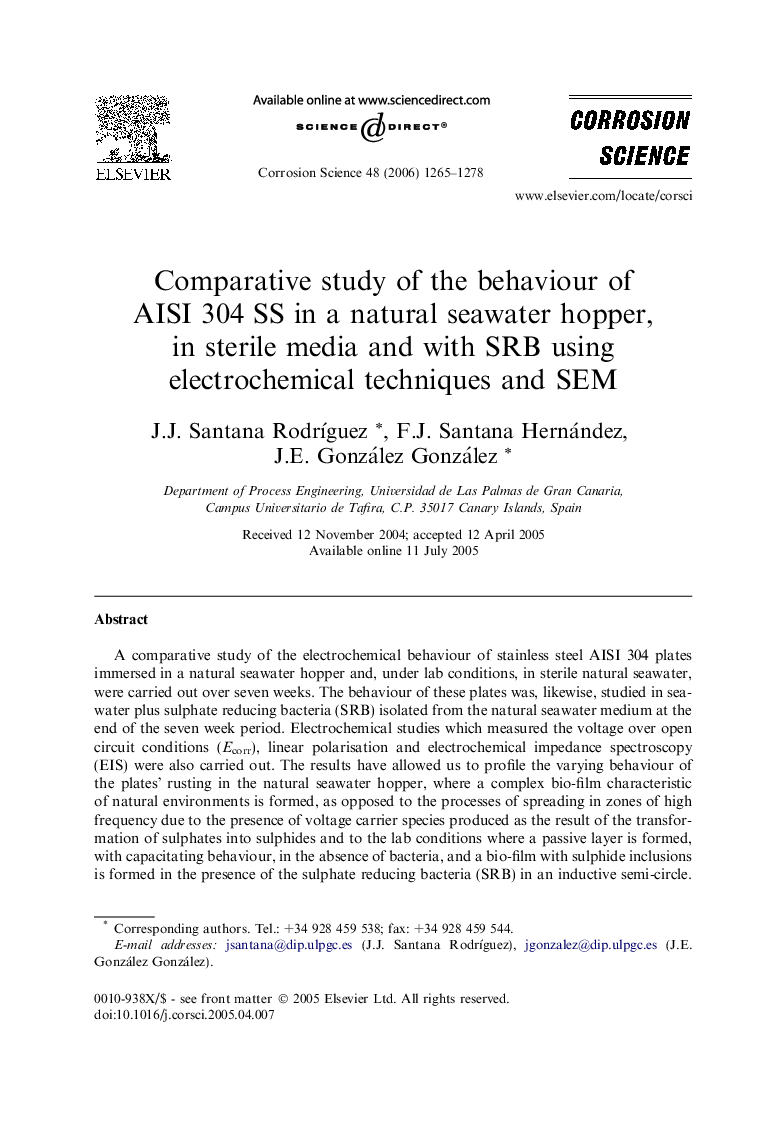| Article ID | Journal | Published Year | Pages | File Type |
|---|---|---|---|---|
| 1471832 | Corrosion Science | 2006 | 14 Pages |
A comparative study of the electrochemical behaviour of stainless steel AISI 304 plates immersed in a natural seawater hopper and, under lab conditions, in sterile natural seawater, were carried out over seven weeks. The behaviour of these plates was, likewise, studied in seawater plus sulphate reducing bacteria (SRB) isolated from the natural seawater medium at the end of the seven week period. Electrochemical studies which measured the voltage over open circuit conditions (Ecorr), linear polarisation and electrochemical impedance spectroscopy (EIS) were also carried out. The results have allowed us to profile the varying behaviour of the plates’ rusting in the natural seawater hopper, where a complex bio-film characteristic of natural environments is formed, as opposed to the processes of spreading in zones of high frequency due to the presence of voltage carrier species produced as the result of the transformation of sulphates into sulphides and to the lab conditions where a passive layer is formed, with capacitating behaviour, in the absence of bacteria, and a bio-film with sulphide inclusions is formed in the presence of the sulphate reducing bacteria (SRB) in an inductive semi-circle. The least protective passive layer appears in the presence of the SRB since the iron sulphide increases the susceptibility of steel to corrosion.
